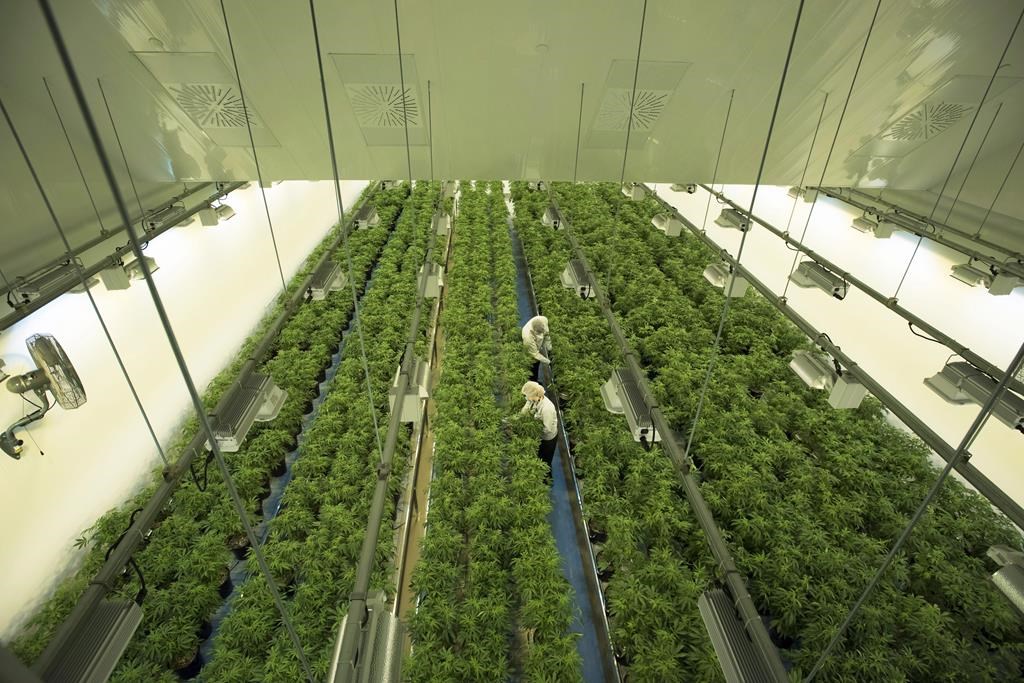Canada’s cannabis legalization has had its problems. For example, last week the Ontario and federal governments blamed each other for the shortage of legal retailers in that province. This week, a producer was caught growing cannabis in unlicensed facilities. And Statistics Canada reports most users still buy from illegal suppliers.

Fortunately, other government data shows the legal industry has made progress over the past year. Further success, however, will require improvements in product supplies, retail convenience, and pricing.
Looking back
Until last October, only registered medical patients could legally use cannabis. As of September 2018, 342,103 cannabis prescriptions were registered with licensed producers. Those purchases averaged 6.7 tonnes monthly.
Another 25,447 patients were growing their own plants. Assuming similar usage, they might have consumed one tonne per month.
WATCH: More people are giving CBD oil to their pets, but experts aren’t sure it’s safe
So altogether, last summer’s legal monthly consumption was around 7.7 tonnes.
By contrast, Health Canada estimates overall usage at roughly 926 tonnes annually, or 77.2 tonnes monthly. That implies just 10 per cent of cannabis usage was legal.
After legalization
When the Cannabis Act arrived Oct. 17, it changed many medical cannabis details but little about usage levels. In April 2019, registered medical use totalled perhaps 8.4 tonnes or 11 per cent of Canadian market volumes.
READ MORE: Ontario Cannabis Store pulls affected CannTrust products amid Health Canada probe
The big change, of course, was recreational use. Health Canada data shows legal product sales began at six tonnes in October and neared eight tonnes in November. But sales then stagnated throughout winter.
April finally saw recreational sales jump to 10.2 tonnes. That put the month’s total legal usage at 18.5 tonnes or roughly 24 per cent of national usage.
Products and provinces vary

WATCH ABOVE: Education on cannabis edibles needed
Within that overall percentage are notable differences between product categories.
Dry cannabis has suffered from product shortages, with April legal sales likely meeting just 17 per cent of demand. Producers apparently have trouble processing and shipping enough finished product.
By contrast, cannabis oil is doing well. Legal products met about 39 per cent of April’s oil-related demand. But that’s unlikely to rise further until cannabis-infused foods and drinks arrive in December.
Rough estimates using Statistics Canada data indicate even greater variation among provinces. Prince Edward Island led the way, as roughly 69 per cent of cannabis consumed there was legal. By contrast, legal products captured only nine per cent of British Columbia’s market.
READ MORE: Ontario’s ombudsman received most complaints about Ontario Cannabis Store
Differing medical cannabis practices contributed to this variation. For example, prescription sales per capita are 12 times higher in New Brunswick than in Quebec. Meanwhile, home growing is nearly five times more common in Nova Scotia than in Newfoundland.
For recreational cannabis, retail access makes a big difference. Provinces with more stores relative to their populations have generally captured more of their markets.
For instance, Nova Scotia and Quebec each opened 12 stores last fall. But the former has just 960,000 people, while the latter has 8.4 million. So, while Quebec sold more cannabis, Nova Scotia captured more market share.
- Posters promoting ‘Steal From Loblaws Day’ are circulating. How did we get here?
- Video shows Ontario police sharing Trudeau’s location with protester, investigation launched
- Canadian food banks are on the brink: ‘This is not a sustainable situation’
- Solar eclipse eye damage: More than 160 cases reported in Ontario, Quebec
Ontario’s experience further demonstrates the importance of stores. The province’s recreational sales jumped from $7.7 million in March to $19.7 million in April, after its first shops finally opened.
Future growth
Overall, legal cannabis has made slow but respectable progress. To support continued growth, several measures are needed.
First, producers must provide more good quality dry cannabis. Despite recent industry progress and ongoing federal denials, product shortages remain. These could be challenging to fix, as producers are simultaneously preparing for cannabis food and beverage production.
Second, provinces must license enough retailers. Ontario, Quebec, and British Columbia especially need more stores. Better retail access there would greatly boost total national sales.
Those governments should consider Alberta, which licensed its 176th store this week. For Ontario to match that for its larger population, it’d need 585 shops.
WATCH: Canopy Growth co-CEO Bruce Linton steps down

Third, as Saskatchewan’s finance minister stated recently, legal prices must eventually drop. There are only so many consumers willing to pay above $10 per gram for legal cannabis, when black market prices are often below $6.
Quebec is ahead on this. Its cannabis agency charges around $8 per gram retail, just 23 per cent above what it pays producers. That reduces its profit but draws more customers away from illegal vendors.
Governments could help with this by adjusting excise tax rates. To compete head-on with black markets, the legal industry eventually needs to “value-price” some products for perhaps $5 per gram including tax. That’s hard to do if $1.65 goes to excise and sales taxes, leaving producers and retailers with only $3.35 to cover their costs.
Maybe someday Canada’s governments can collect cannabis tax revenues like Colorado’s US$1 billion annual haul. But if policymakers truly want to target black markets, they need to put-off any dreams of tax windfalls.
Michael J. Armstrong is an associate professor in the Goodman School of Business at Brock University.


_-_online_848x480_1446919235980.jpg?w=1200&quality=70&strip=all)





Comments